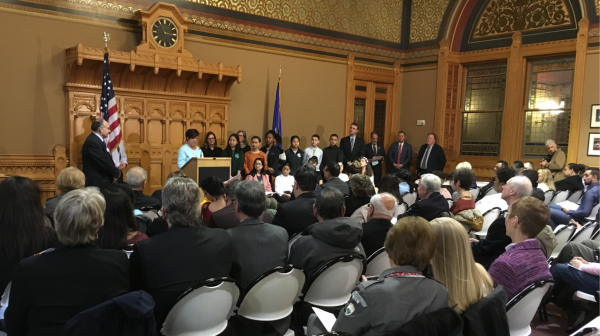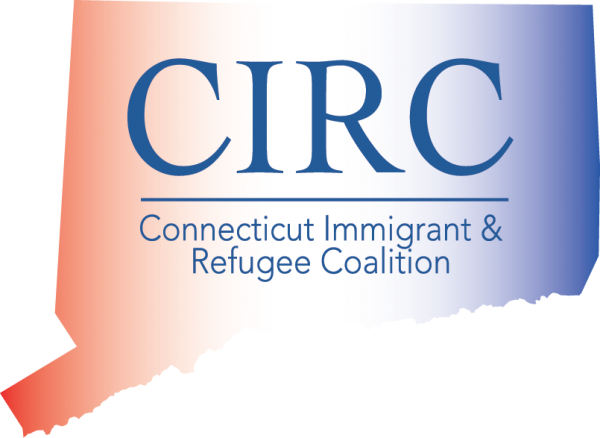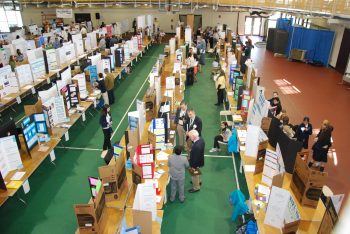Women in Manufacturing Summit Slated for May Amidst Increasing Focus
/The Business, Management, and Advanced Manufacturing Department at Goodwin College has announced its inaugural Women of Manufacturing Summit to be held on Wednesday, May 16. Connecticut is home to 4,011 manufacturing firms that employ more than 159,000 workers – and employment opportunities are expected to increase in the coming years. Key industries include transportation equipment (primarily aerospace, submarines, and automotive), chemicals, fabricated metals, electrical equipment, computer and electronic products, machinery, pharmaceutical and medical, and plastics
The event will be held at the College’s Business and Manufacturing Center, One Pent Road in East Hartford, from 5:30 to 8 p.m. Admission is free and the event is open to the public.
The Summit will bring together individuals interested in encouraging women to consider career options in business and manufacturing. Business leaders, educators, and students will participate in discussions focused on dispelling myths about today’s manufacturing environments; the variety and volume of job opportunities; compensation issues; and shift options for women, particularly those balancing family responsibilities and continuing education.
A photographic exhibit, courtesy of Jobs to Move America and sponsored by Andrews Benefits of Farmington, will feature women in all areas of modern manufacturing.
“Partnerships between businesses and educational organizations can help identify a successful employee fit prior to hiring and lead to entry-level positions,” said Melanie Hoben, Director of Workforce Development at Goodwin College. “We realized that, with our experienced faculty and our industry partners, we have a prime opportunity to host a Summit that encourages discussions among these stakeholders as well as women seeking pathways into the workforce.”
Goodwin currently offers business and manufacturing programs that range from certificates to associate and bachelor’s degrees. While there are some 13,000 unfilled manufacturing jobs in Connecticut, women seldom see themselves pursuing those viable careers.
“Women are significantly underrepresented in the manufacturing industry, and we are committed to changing that dynamic,” Hoben adds. “Opportunities like this Summit will help harness an  untapped talent pool, inform women of the opportunities for well-paid, rewarding work, and allow them to network with some of the region’s visionary business leaders.”
untapped talent pool, inform women of the opportunities for well-paid, rewarding work, and allow them to network with some of the region’s visionary business leaders.”
CBIA partnered with the NSF Regional Center for Next Generation Manufacturing, Connecticut State Colleges and Universities last year to survey the state's manufacturers about their hiring expectations and workforce challenges for the next three years.
The survey found that almost every manufacturer surveyed expects to grow their workforce in the next three years. Forty-two percent of manufacturers in Connecticut said they anticipated near-term workforce growth, while 44% predicted flat growth, and 14% have contracted out work. With an average hiring rate of 22 people per year, manufacturers responding to the survey last year said they expected to hire primarily full-time employees by the end of 2019.
Women in Manufacturing, a national organization dedicated to supporting, promoting and inspiring women who are pursuing or have chosen a career in the manufacturing industry, held their annual summit in Hartford at the Connecticut Convention Center last fall.
The conference included plant tours at some of the area's most advanced facilities including CNC Software, Hartford Flavor Company, TRUMPF Inc., and Pratt & Whitney. The Milken Institute's State Technology and Science Index, evaluating each state's tech and science capabilities, ranked Connecticut sixth in the country in 2016.
In the survey of Connecticut businesses conducted for CBIA, graduates of major universities (such as the University of Connecticut), Connecticut's private colleges, and private occupational schools are largely viewed as highly qualified job candidates (78%, 75%, and 74% of respondents, respectively, are somewhat satisfied or extremely satisfied).
Recommendations for how educational institutions could address the skills deficit problem include a greater emphasis on technical training and skills (60%), integration of employability skills such as punctuality and professionalism (57%), greater access to internships (38%), opportunities for career development (35%), and more rigorous preparation in basic skills like reading, writing, and math (28%), according to the survey.
Seven of the state’s public community colleges participate in an Advanced Manufacturing Technology program, with the curriculum offered to students at Asnuntuck Community College, Housatonic Community College, Naugatuck Valley Community College, Quinebaug Valley Community College, Manchester Community College, Middlesex Community College and Three Rivers Community College. Specialties range from welding and mechatronics to CAD/CAM programming, tool & die to precision sheet metal fabrication, and additive manufacturing to computer numerical machining. Not all the programs are offered at all seven of the state colleges.
Reservations (requested by May 9) for the Goodwin College summit can be made at www.goodwin.edu/summit.





 Women working full-time, year-round have the highest earnings in the District of Columbia, where women’s median annual earnings are $65,000. Connecticut, Maryland, Massachusetts, and New Jersey are tied for second, with women in those states earning $50,000 at the median.
Women working full-time, year-round have the highest earnings in the District of Columbia, where women’s median annual earnings are $65,000. Connecticut, Maryland, Massachusetts, and New Jersey are tied for second, with women in those states earning $50,000 at the median.
 More than 250 attendees will include consultants, coaches, funders, academics, and executives from across the country. The conference intends to “convene the diverse perspectives that shape and advance our field.”
More than 250 attendees will include consultants, coaches, funders, academics, and executives from across the country. The conference intends to “convene the diverse perspectives that shape and advance our field.”
 The
The 

 Sixth-graders from the Interdistrict School for Arts and Communication in New London were recognized for their project, “Community Faces-Humanizing the Immigrant Label,” parts of which were on display at the Capitol. The second group was Teens4Citizenship, a Hartford Public Library and Hartford Public Schools collaborative program. As "Citizenship Guides," these high school immigrant students support family and community members on the path to Citizenship and upon turning 18 pursue their own citizenship.
Sixth-graders from the Interdistrict School for Arts and Communication in New London were recognized for their project, “Community Faces-Humanizing the Immigrant Label,” parts of which were on display at the Capitol. The second group was Teens4Citizenship, a Hartford Public Library and Hartford Public Schools collaborative program. As "Citizenship Guides," these high school immigrant students support family and community members on the path to Citizenship and upon turning 18 pursue their own citizenship.

 Bachelor's degree programs (13): Accelerated Nursing, Aging Studies, Climate Change Science, Elementary Education: Community Engaged Learning, Environmental Studies and Sustainability, Fine Woodworking and Furniture Design, Fisheries Biology, Health Care Studies, Information Technology International Affairs (dual major), Movement Science: Wilderness Leadership Concentration, Wildlife Biology, World Languages Education (K-12)
Bachelor's degree programs (13): Accelerated Nursing, Aging Studies, Climate Change Science, Elementary Education: Community Engaged Learning, Environmental Studies and Sustainability, Fine Woodworking and Furniture Design, Fisheries Biology, Health Care Studies, Information Technology International Affairs (dual major), Movement Science: Wilderness Leadership Concentration, Wildlife Biology, World Languages Education (K-12) Instead of honoring Christopher Columbus, the Indigenous Peoples’ Day recognizes Native Americans, who were the first inhabitants of the land that later became the United States of America. Advocates for the switch to Indigenous Peoples Day argue that Columbus did not “discover” America in 1492 but instead began the colonization of it.
Instead of honoring Christopher Columbus, the Indigenous Peoples’ Day recognizes Native Americans, who were the first inhabitants of the land that later became the United States of America. Advocates for the switch to Indigenous Peoples Day argue that Columbus did not “discover” America in 1492 but instead began the colonization of it.
 The primary objective of the fair is to attract young people to careers in mathematics, science, and engineering while developing critical thinking and public speaking skills. Through their participation in the fair, students are encouraged to pursue independent work using proper research methods.
The primary objective of the fair is to attract young people to careers in mathematics, science, and engineering while developing critical thinking and public speaking skills. Through their participation in the fair, students are encouraged to pursue independent work using proper research methods.
 teachers and administrators are armed,” 85 percent said they would not; 15 percent thought they would.
teachers and administrators are armed,” 85 percent said they would not; 15 percent thought they would.
























